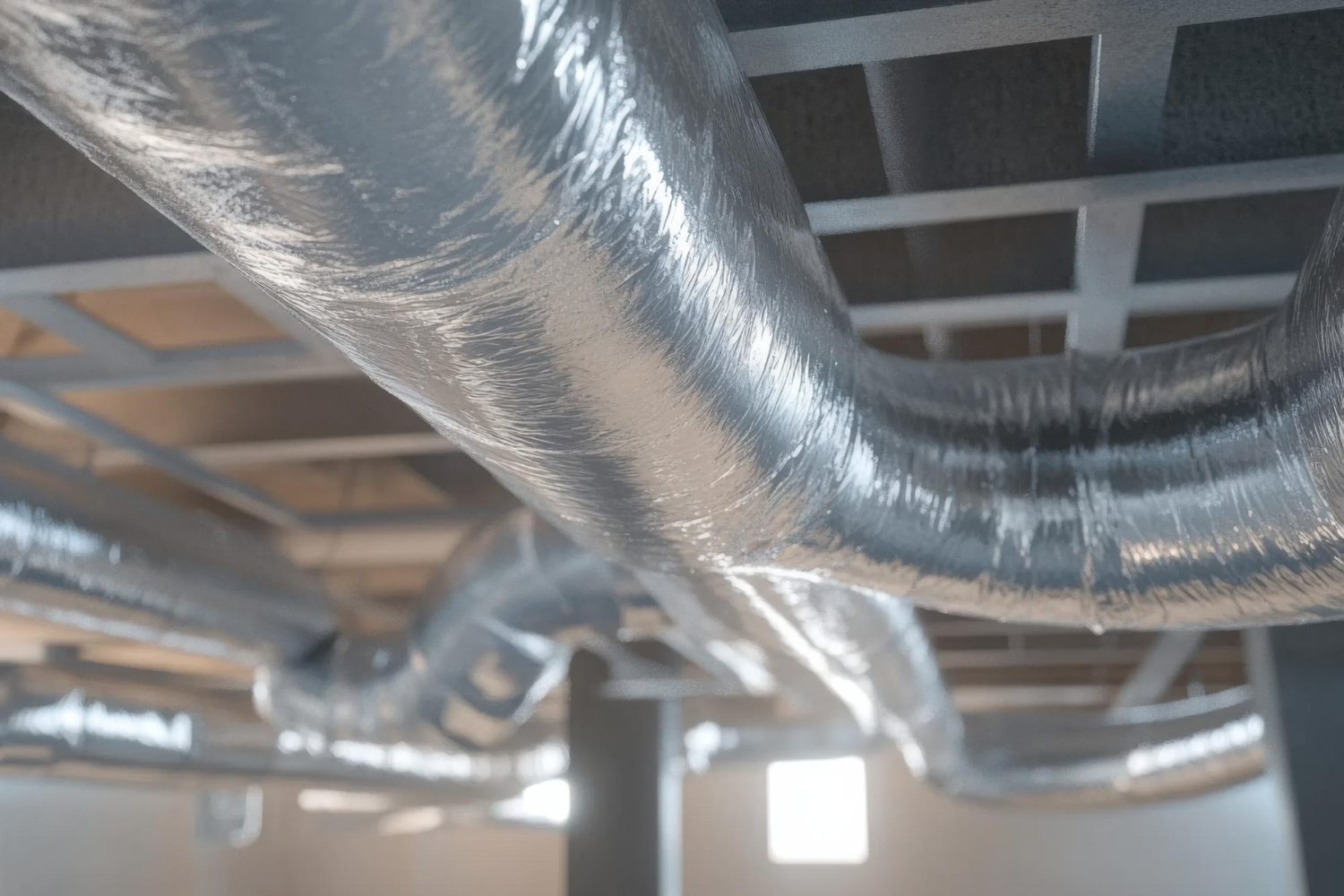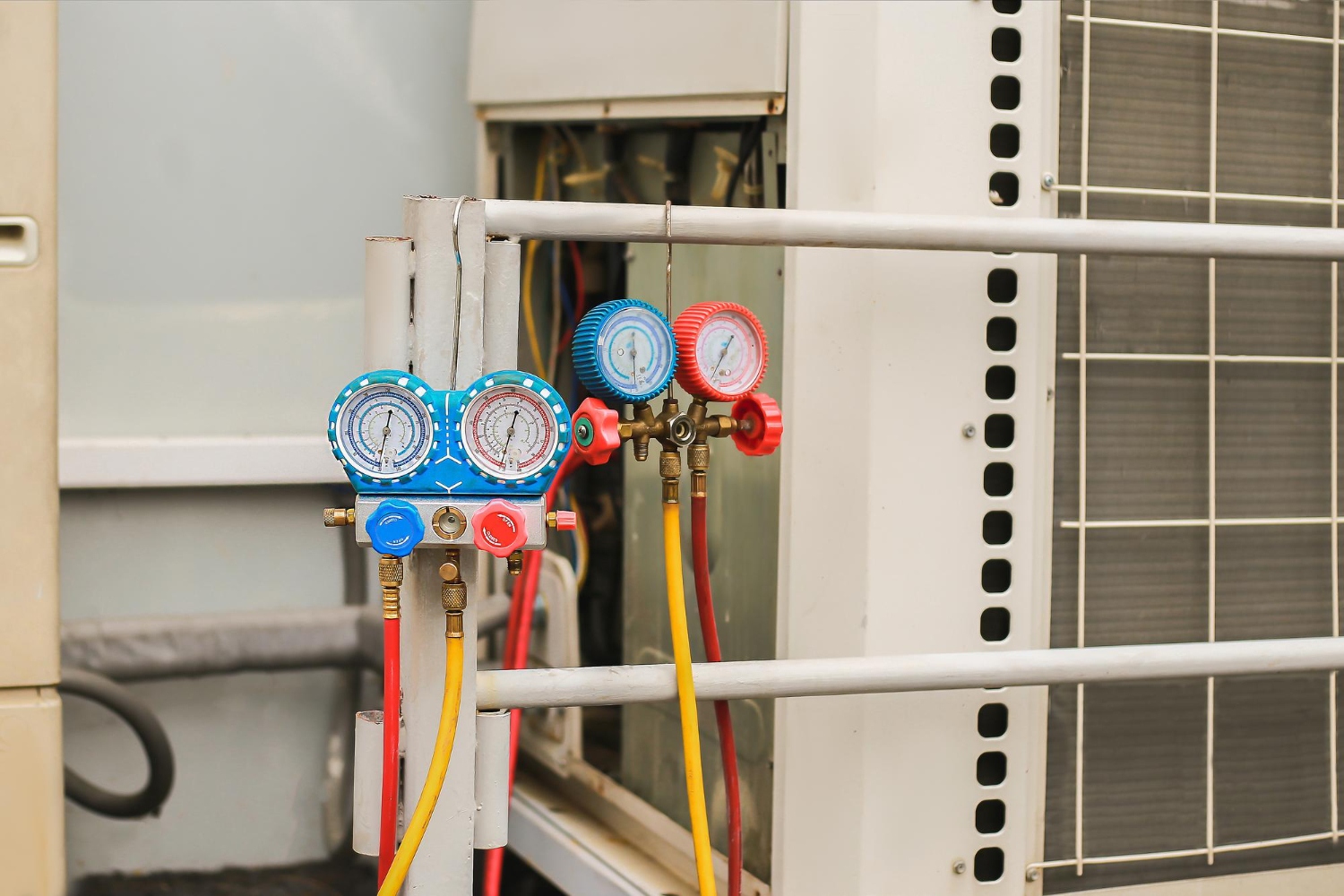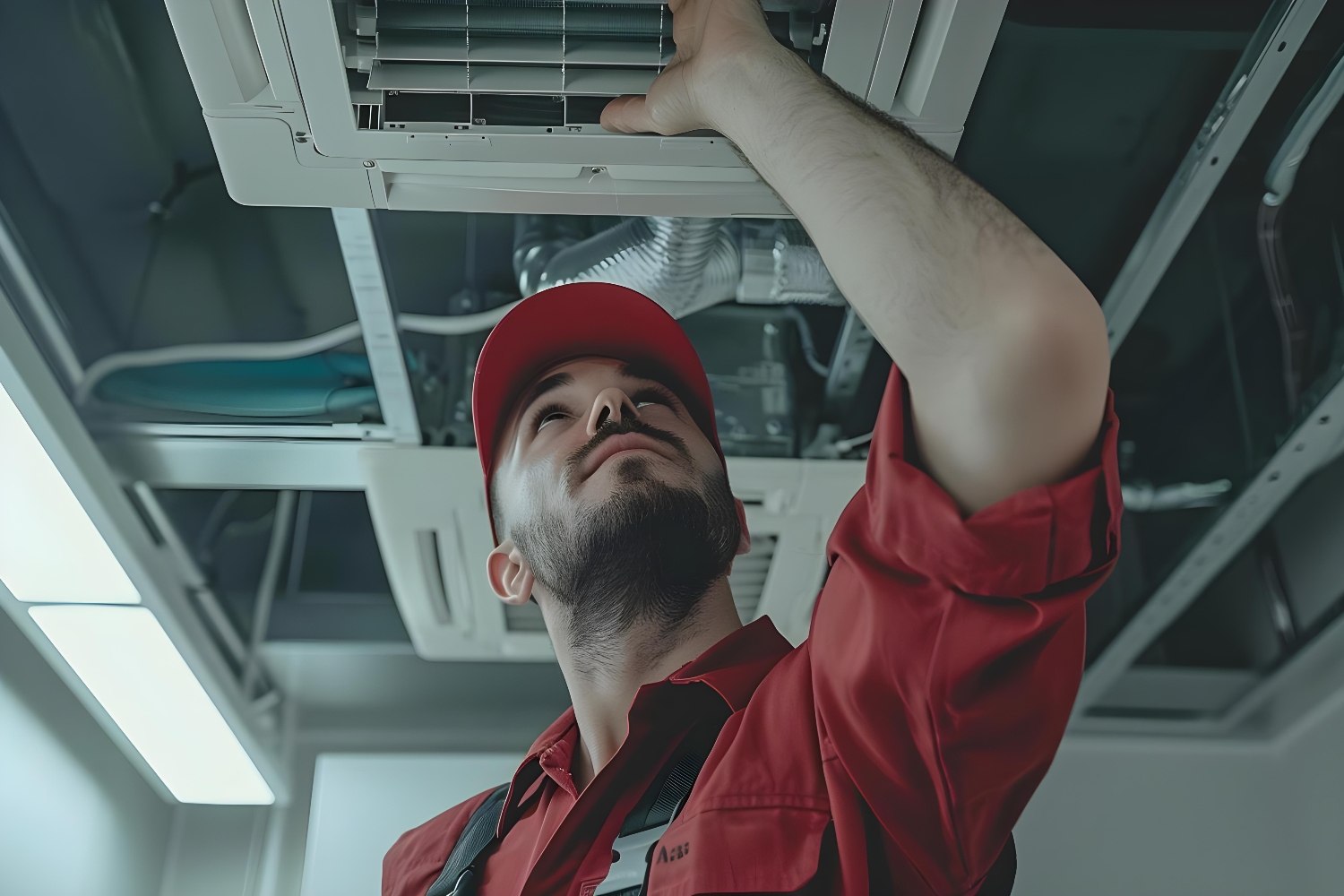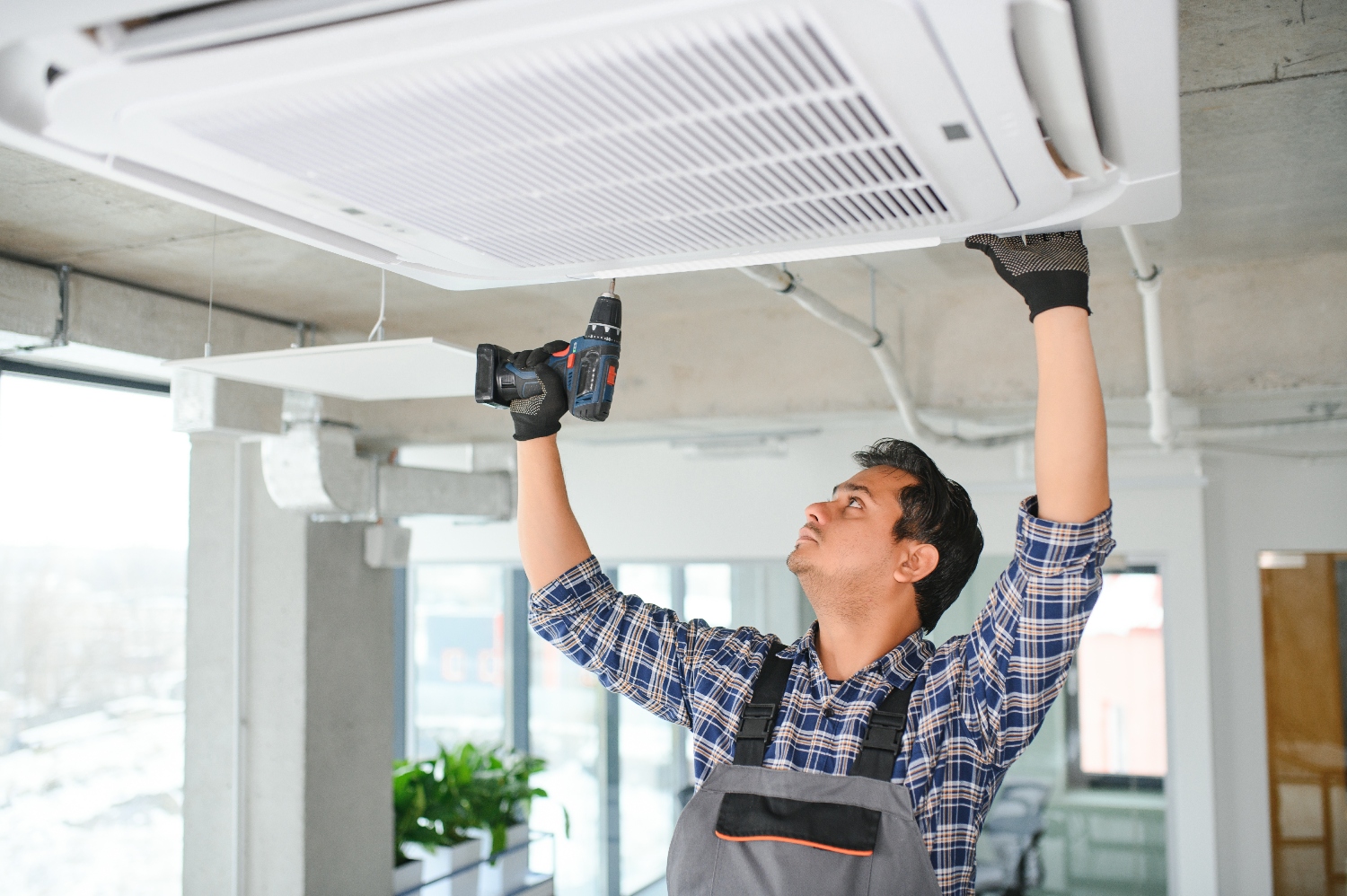A full HVAC inspection covers everything from checking refrigerant levels and cleaning coils to testing electrical connections and examining your ductwork for leaks
Summer puts serious stress on your air conditioning system, and the last thing you want is to discover problems when temperatures soar. Most homeowners don't realize their HVAC system needs attention until it breaks down on the hottest day of the year.
This complete system check helps catch small issues before they become expensive repairs. Professional technicians also test your system's efficiency and make adjustments that can lower your energy bills.
We'll walk you through what really happens during a professional inspection and help you understand why this preventive step matters for your comfort and wallet.
Let’s break down the key points you should consider:
- What is an HVAC inspection and why it matters before summer
- What a professional HVAC inspection includes
- How often should you schedule an HVAC inspection?
- What does an HVAC inspection cost and is it worth it?
Keep reading! You'll learn how often to schedule these checkups, what they typically cost, and how to tell if your system is truly ready for summer's demands.
What is an HVAC inspection and why it matters before summer
An HVAC inspection is a detailed check of your heating and cooling system that identifies potential problems before they become expensive emergencies. Summer heat waves place extreme demands on HVAC units, making seasonal maintenance crucial for preventing system failures and extending equipment life.
The role of seasonal HVAC checkups in system longevity
Regular seasonal inspections are the foundation of preventative maintenance that keeps HVAC systems running for decades instead of years. We recommend scheduling inspections twice per year - once in spring before cooling season and once in fall before heating season.
During these seasonal checkups, technicians clean components that accumulate dirt and debris over time. Dirty coils and clogged filters force your system to work harder, reducing efficiency and shortening equipment life.
Seasonal inspections also allow technicians to spot worn parts before they fail completely. Small repairs during routine maintenance cost far less than emergency replacements during peak summer heat.
Key benefits of seasonal HVAC inspections:
- Reduced energy bills through improved efficiency
- Fewer unexpected breakdowns
- Extended equipment lifespan
- Better indoor air quality
- Maintained manufacturer warranties
Systems that receive regular seasonal maintenance typically last 15-20 years compared to 8-12 years for neglected units.
What homeowners typically overlook before heat waves hit
Most homeowners focus only on changing air filters but miss critical maintenance tasks that prevent summer breakdowns. We find that refrigerant levels, electrical connections, and condensate drains are commonly ignored areas that cause major problems.
Refrigerant leaks develop slowly over time and reduce cooling capacity. Low refrigerant forces your system to run longer to reach set temperatures, increasing energy costs and component wear.
Loose electrical connections create fire hazards and cause intermittent system failures. These connections loosen naturally due to heating and cooling cycles but require professional attention to tighten safely.
Condensate drain clogs cause water damage and humidity problems. When drains back up, excess moisture promotes mold growth and can trigger safety shutoffs that leave you without cooling.
Outdoor unit maintenance is another overlooked area. Vegetation growth, debris accumulation, and dirty condenser coils all reduce system efficiency and can cause compressor damage.
How inspections help prevent costly breakdowns and repairs
Professional HVAC inspections identify small issues before they cascade into expensive system failures. We've seen minor problems like dirty coils or worn belts lead to compressor replacement costs of $2,000-$4,000 when left unchecked.
Common expensive repairs prevented by inspections:
- Compressor failure: $2,000-$4,000
- Evaporator coil replacement: $1,500-$3,000
- Blower motor replacement: $800-$1,500
- Refrigerant line repairs: $500-$1,200
Heat waves create the worst possible timing for HVAC failures. Emergency service calls during peak summer often cost 50-100% more than regular maintenance visits.
Inspections also prevent secondary damage from system failures. When HVAC units break down, the resulting temperature and humidity changes can damage flooring, furniture, and electronics.
Early detection saves money by allowing repairs during off-peak seasons when parts are available and technicians aren't overwhelmed with emergency calls. This timing gives you better scheduling options and competitive pricing.
What a professional HVAC inspection includes
A professional HVAC inspection covers three main areas that keep your system running well. We check how your system performs, test important parts like refrigerant and electrical components, and clean key areas while examining your filters and ducts.
System performance check and airflow analysis
We start by testing how well your HVAC system works overall. This means checking if air moves properly through your home and if temperatures match what your thermostat shows.
Our HVAC technician measures airflow at different vents throughout your house. Poor airflow often means blocked ducts or a failing blower motor. We also test air pressure to find leaks or blockages.
Key airflow measurements we take:
- Static pressure readings
- Air velocity at supply vents
- Return air volume
- Temperature differences between rooms
We check if your system cycles on and off correctly. A system that runs too long or too short wastes energy and wears out faster.
We also test how evenly your system heats or cools different rooms. Hot or cold spots usually point to ductwork problems or equipment issues that need fixing.
Refrigerant levels, electrical components, and thermostat calibration
We check your refrigerant levels to make sure your air conditioner can cool properly. Low refrigerant means your system works harder and costs more to run. We also look for leaks that could cause bigger problems later.
Our technician tests all electrical components using special tools. We check wire connections, motor functions, and safety switches. Loose wires or worn parts can cause system failures or safety risks.
Electrical components we inspect:
- Capacitors and contactors
- Blower motor connections
- Control board functions
- Safety switches and fuses
We test your thermostat to make sure it reads temperatures correctly. A bad thermostat can make your system run when it should not or fail to start when you need it.
We also check that your thermostat controls match your system settings. Wrong settings waste energy and reduce comfort in your home.
Cleaning, filter checks, and duct condition overview
We examine your air filter to see if it needs replacing. A dirty filter blocks airflow and makes your system work harder. We check what type of filter you need based on your system and air quality needs.
Our cleaning process includes important parts that collect dirt and debris. We clean condenser coils, evaporator coils, and drain pans. Dirty coils reduce cooling power and can cause water damage.
We inspect your ductwork for holes, loose connections, or damage. Bad ducts waste energy by letting cool air escape before it reaches your rooms.
According to the U.S. EPA, sealing air ducts helps reduce energy waste by preventing leaks into unconditioned areas, an essential benefit of professional HVAC inspection.
Ductwork problems we look for:
- Air leaks at joints
- Damaged insulation
- Blocked return vents
- Loose or disconnected sections
We also check drain lines to prevent water backup. Clogged drains can cause flooding and damage to your home. Clean drains keep moisture levels normal and prevent mold growth.
How often should you schedule an HVAC inspection?
Most experts recommend scheduling HVAC inspections twice a year, but your specific needs depend on your climate, system age, and usage patterns. We'll help you determine the right maintenance schedule for your home.
Frequency based on climate and system age
Your climate plays a major role in how often we recommend inspections. Hot, humid areas put more stress on cooling systems and may need inspections every 6 months.
Cold climates with long winters should focus on fall inspections before heating season. Moderate climates can often get by with annual spring inspections.
System age matters too:
- New systems (0-5 years): Annual inspections are usually enough
- Older systems (10+ years): We recommend twice-yearly inspections
- Very old systems (15+ years): Consider seasonal inspections plus additional checks
Homes with heavy HVAC usage need more frequent attention. If you run your system year-round, plan for bi-annual maintenance.
Annual vs. bi-annual inspections: What's ideal?
Annual inspections work well for newer systems in moderate climates. Schedule these in spring before peak cooling season starts.
Bi-annual inspections offer better protection for most homes. Spring inspections prepare your AC for summer heat. Fall inspections get your heating system ready for winter.
Here's our recommended schedule:
System Type
Spring Inspection
Fall Inspection
AC Only
Required
Optional
Heat Pump
Required
Required
Full HVAC
Required
Required
Bi-annual maintenance can improve efficiency by up to 5% annually. It also helps prevent costly breakdowns during peak seasons.
Signs your HVAC might need an inspection sooner
Don't wait for your scheduled maintenance if you notice these warning signs:
Immediate inspection needed:
- Strange noises like grinding or squealing
- Weak airflow from vents
- Uneven heating or cooling between rooms
- Higher energy bills without increased usage
Schedule within 2 weeks:
- Musty or unusual odors
- Frequent cycling on and off
- Humidity problems indoors
- Visible dust buildup around vents
If your system is over 10 years old, pay extra attention to these signs. Older systems can develop problems quickly between regular inspections.
What does an HVAC inspection cost and is it worth it?
Most homeowners pay between $150 and $500 for a complete HVAC inspection, though individual component checks cost much less. The investment typically pays for itself through energy savings and avoids repair costs within the first year.
Breakdown of typical diagnostic fees in residential settings
A full residential HVAC inspection ranges from $150 to $500 depending on your system size and location. This comprehensive service includes checking your heating system, cooling system, and ductwork.
Individual component inspections cost significantly less:
- Furnace inspection: $50 to $180
- Air conditioning inspection: $50 to $180
- Ductwork inspection: $50 to $180
The total cost depends on several factors. Larger homes with complex systems pay more than smaller properties. Your location affects pricing, with urban areas typically charging higher diagnostic fees than rural regions.
Most HVAC technicians spend at least one hour completing a thorough inspection. Some companies offer package deals if you need multiple components checked during the same visit.
Why inspections save money long term (even if nothing's broken)
Regular inspections deliver strong ROI through energy savings and prevent breakdowns. We typically see 10-15% reductions in energy bills after addressing issues found during routine checks.
Small problems caught early cost much less to fix. A dirty filter or loose connection might cost $20 to address during an inspection. The same issue could lead to a $500 repair if left unchecked.
Inspections extend equipment life by years. Well-maintained systems last 15-20 years compared to 10-12 years for neglected units. This translates to thousands in avoided replacement costs.
Energy savings add up quickly. A system running 10% more efficiently saves $200-400 annually on utility bills for most residential HVAC systems.
According to the U.S. Department of Energy, homes can lose up to 30% of their heating and cooling energy due to air leaks and inefficient equipment—making routine inspections a cost-saving necessity
Questions to ask your HVAC technician before hiring
Ask about inspection scope: "What specific components will you check?" Make sure they cover heating, cooling, ductwork, and electrical connections.
Confirm pricing upfront: "What are your diagnostic fees, and what's included?" Some companies charge extra for written reports or follow-up recommendations.
Understand their process: "How long does the inspection take?" Quality inspections require at least 60-90 minutes for thorough evaluation.
Request credentials: "Are you licensed and insured?" Verify they have proper certifications for your area and equipment type.
Ask about guarantees: "Do you warranty your inspection findings?" Reputable technicians stand behind their diagnostic work.
Discuss next steps: "What happens if you find problems?" Understand their repair process and get estimates before authorizing additional work.
Conclusion
A full HVAC inspection gives us the confidence we need before summer arrives. We know our system can handle the heat when professionals check every component.
Regular inspections save money in two ways. They prevent costly breakdowns during peak season. They also keep our energy bills lower through better efficiency.
You should schedule your inspection in spring before temperatures rise. This timing gives us weeks to fix any problems technicians find.
Professional inspections catch problems you might miss on your own. Trained technicians spot worn parts and system issues early. They have the tools to test refrigerant levels and measure airflow properly.
The investment in an annual inspection pays off quickly. You avoid emergency repair calls when it's 95 degrees outside. Systems run more efficiently all summer long.
Most inspections take one to two hours to complete. You’ll get a detailed report showing what was checked and any recommendations. This gives you a clear picture of our system's condition.
Summer puts the biggest demand on our HVAC system all year. A thorough inspection ensures we stay comfortable when the heat hits hardest.
Book your summer HVAC inspection now to ensure efficient cooling, avoid breakdowns, and keep your home comfortable all season.





































































.jpg)
.jpg)

.jpg)
.jpg)




















